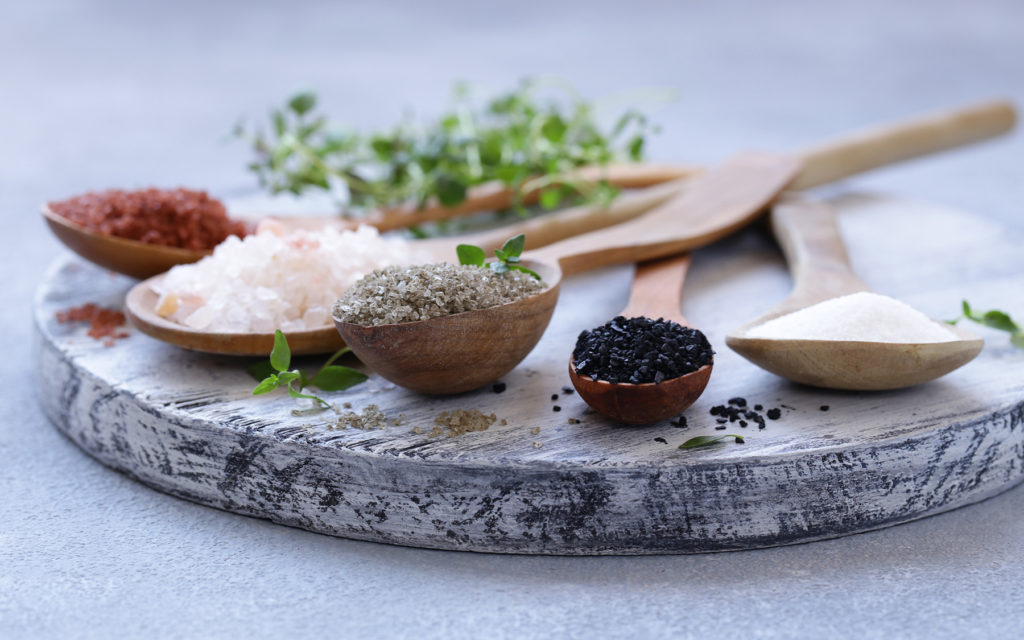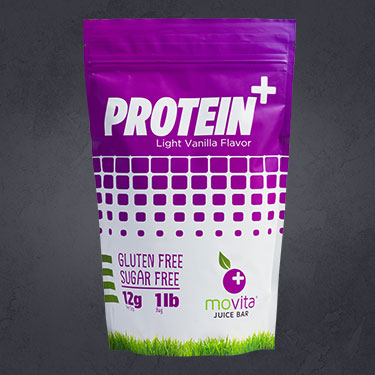
Not too long ago we didn’t think very much about the type of salt we used. Now there are numerous types of salt available in the market, each one presenting itself as the very best choice.
Salt is a combination of 40% sodium and 60% chloride, minerals that are naturally present in the ocean and in the ground. Salt is either harvested from salt mines or evaporated from salty sea water. Sodium is an essential mineral, meaning that we need to get some sodium from our foods in order to foster good health. Sodium plays a role in our body’s fluid balance, sends nerve impulses, and affects muscle function. Too much sodium, however, has a negative effect on our health. Extra sodium in our bloodstream pulls water into blood vessels, increasing the volume of blood, which increases blood pressure levels.
The Most Common Types of Salt
- Table salt is refined into small crystals that dissolve easily. During processing, any additional minerals that are naturally present in the salt are removed and often a flaking agent is added to prevent clumping. Most table salt is fortified with iodine, an essential mineral that is crucial for the production of thyroid hormones. Low levels of iodine in our diet can lead to hypothyroidism, goiter, and neurocognitive impairments.
- Kosher salt has a larger flake size than table salt and does not contain added iodine. It dissolves quickly and provides the same taste as refined salt. Since the larger flakes make it easier to pick up with our fingers, kosher salt can easily be sprinkled over foods.
- Sea salt is a broad term for salt harvested by evaporating ocean water. Sea salt is usually not as finely ground as table salt, producing a coarse crystal and more of a burst of flavor. The amount of sodium, chloride, iodine, and other minerals in sea salt varies depending on where it’s produced. However, due to ocean pollution, sea salt can also contain trace amounts of heavy metals like lead that are dangerous to health.
Types of Specialty Salts
- Pink Himalayan salt is harvested from a large salt mine in Pakistan. The pink color is due to iron oxide in the salt. This salt also contains trace amounts of calcium, potassium, and magnesium.
- Grey salt is often called Celtic sea salt because it’s hand-raked from the seashore in Brittany, France where the grey clay and sand create mineral-rich crystals.
- Fleur de sel is a more expensive version of Celtic sea salt, because for every 40 kilograms (kg) of grey salt produced, only 1.5 kg of fleur de sel is harvested. It’s a light and flaky salt usually used for finishing foods. This is the salt of choice for most chefs.
- Black lava salt is an unrefined, coarse salt that originates from Hawaii where activated charcoal provides the black color.
- Red salt also comes from Hawaii, and its color stems from volcanic clay called alaea. It’s higher in iron than other types of salt.
- Persian blue salt is a mineral-rich salt harvested from a salt lake in Iran. It’s a rare (and therefore expensive) type of salt.
- Smoked salts are sea salts that are smoked at low temperatures over a bed of coals which gives a smoky flavor to the salt crystals.
DISCLAIMER: These statements have not been evaluated by the FDA. The information is for informational purposes and is not intended to treat, diagnose or cure any illness. Consult a physician before taking any action.
Want to contribute great content?
We are looking for contributors provide our readers with great healthy content to encourage positive living. If you're interested in becoming a contributor pease email us at blog@movitajuicebar.com



